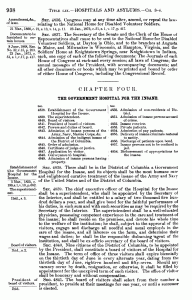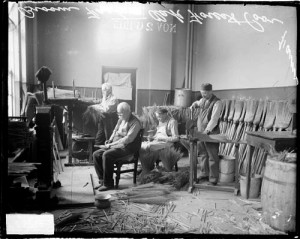St. Elizabeths cannot really be compared to the Canton Asylum for Insane Indians. Except for the fact that both institutions were run by the federal government, they were as different as night and day. St. Elizabeths was a huge institution, with over 2,700 patients in 1909; it required its own power plant. The institution had almost ten times the number of cattle (50) as the Canton Asylum, and enough poultry to require a hennery.
In common with its sister asylum, St. Elizabeths was often overcrowded. Because its DC location was closer to the center of power, however, superintendents could more easily make their case for additional money and facilities. St. Elizabeths housed (for the most part) soldiers and sailors, who had more public sympathy than Canton’s Indians.
________________________________________________________



